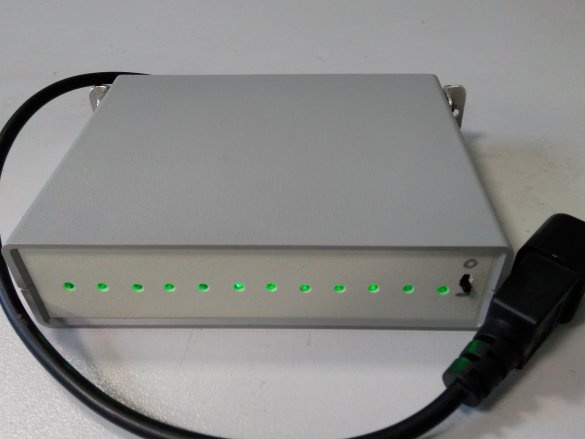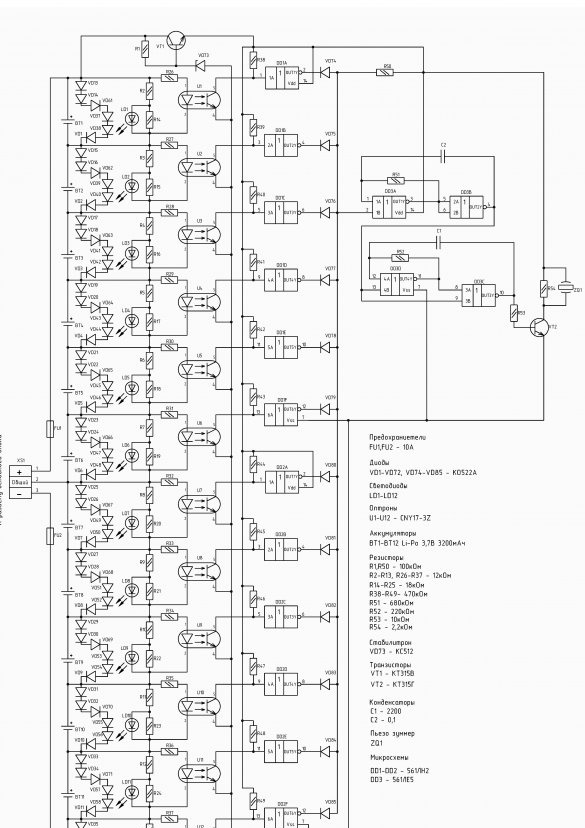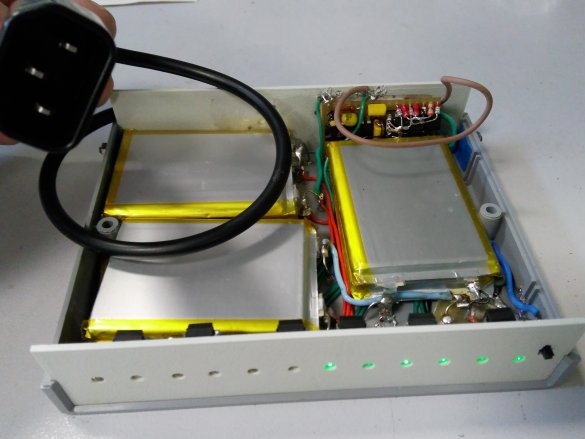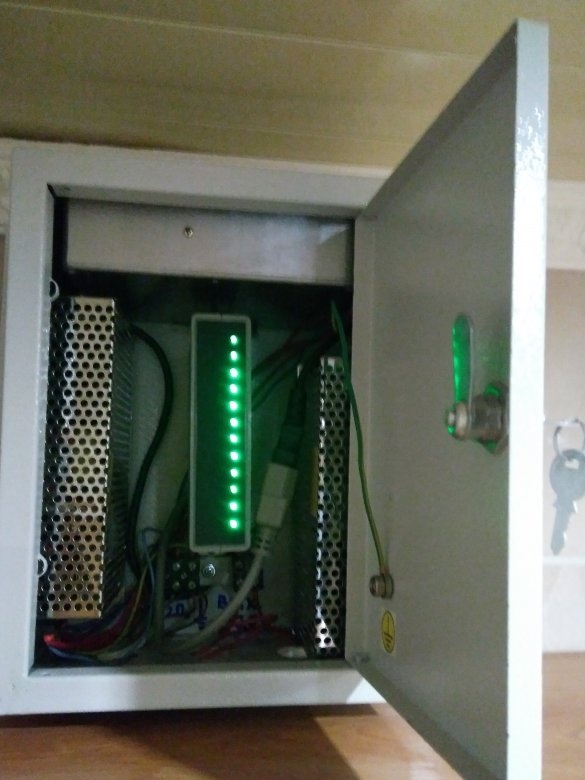Good day and health to all the inhabitants of our sites. In the last three publications, about perfect lighting in the house, I kind of clearly described how the lighting system works and provided schematic diagrams of the main unit and regulators. And today I represent the finished development. Battery pack for TOP lighting system. Everyone understands that when there is no light in the house, this brings minor inconvenience. Under these circumstances, we begin to hastily look for flashlights, matches, candles, and even worse, get nervous and angry if we are in the bathroom. To prevent such a nervousness, during the development of the system I envisaged feeding it from an independent source. And so I came up with a circuit and created a battery pack.
I bought the block case and all accessories in the Chip and Dip store. I mounted LEDs, optocouplers, a switch, resistors on the front panel of the case. All this is established by soldering a rounded conductor into plastic. The photo shows this mounting option.
Then he soldered the thin conductors according to the circuit diagram. All that could and should have been connected, without batteries, I unsoldered. Further, using sealant glue, I glued the first six batteries and unsoldered the circuit. I want to emphasize that the soldering circuit with voltage from the battery cells must be very carefully and without rush.
The following six batteries also stuck and neatly soldered the remainder of the circuit.
The block is mounted in a box on two aluminum corners. They are screwed to the block body, after its final assembly. This is how it looks like an assembly.
Now it remains to fix the unit in the system box and enjoy the perfect lighting in the house.






